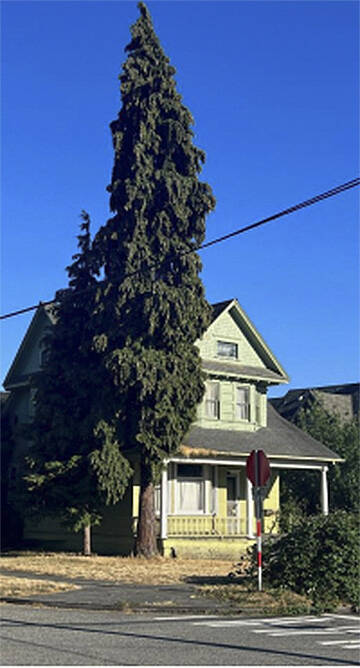Don’t go out on a limb when planting a tree.
That’s especially true when thinking of planting trees in urban areas. There is a lot to know to make sure they live to a ripe old age.
Autumn Salamack, Bainbridge Island climate officer, and Drue Morris, the city arborist, educated the public at their first Climate Smart webinar on Zoom Sept. 14. The title was “Right Plant, Right Place: Choosing appropriate trees for the urban environment.”
Salamack started off by saying trees absorb carbon dioxide so they are very important to the city’s Climate Action Plan. That project’s goals are to reduce greenhouse gas emissions by 25% by 2025, 60% by 2035 and 90% by 2045.
Trees clean the air by absorbing carbon dioxide and through photosynthesis sending it back into the air as oxygen.
Morris said urban trees behave very differently than those in the forests. “There’s a whole mess of things to consider,” she said.
She said planting and caring for trees can be costly and time-consuming, and there are many benefits besides reducing pollution — such as erosion control and cooling temperatures by providing shade.
The Big 5 things to think about when planting urban trees are: location, cultural conditions, species, maintenance and wildfires.
Location: “I didn’t think it would get that big.” Morris said that should be the motto in the Pacific Northwest. Because of so much rainfall, trees often exceed the dimensions on the tag when they’re purchased.
Where a tree is planted is so important, not too close to the house or sidewalk because of the growing root system. Trees are not happy near foundations or sidewalks, she said. They can also cause problems with gutters, sewer and water pipe systems, power lines and even other trees. If you want light to come through a window you wouldn’t want to plant a tree in front of it. Avoid overcrowding.
Cultural conditions: Some trees don’t grow well in soil with sand or clay. It’s not good to plant a tree in an area where there is often standing water or on a slope. Some trees require full sun and are less tolerant to shade.
Species: Picking a tree type is the best part, Morris said. Some can produce undesirable fruit, however, which can lead to “tree resentment.” Others can have issues with disease. “Look around and see what neighbors are planting and try not to do the same thing,” she said. A diverse landscape not only is more attractive, but it can “soften the blow of pests and disease” because it won’t spread to other tree families.
Morris said people need to look at other parts of the country and avoid their pitfalls. “Be proactive,” she said, adding it “really grinds my gears lately” the problems people are having with Callery/Bradford Pear trees. She also said stay away from Paperbark birch and Tree of Heaven, due to disease and pest concerns.
Maintenance: Check different types of trees to see how much pruning and other maintenance they will require. Pruning some trees can cost up to $1,000.
Wildfire: Trees need to be planted away from homes to be safe from wildfire. Junipers are not a good choice due to fire, but trees such as maples, oaks, beech, larch and Ponderosa pine are “more fire resistant. That does not mean fireproof.”
Morris said she is working on a list with the local fire department about fire-resistant trees that should be available in the future.
Some trees – like madrones – have personalities almost like people. “Poor madrones. They are not tolerant to losing their friends around them. That can be stressful for them,” Morris said.
Resources
-Morris said this website is great for helping to select a tree: selectree.calpoly.edu/.
-The Bainbridge Shoreline Management Plan at bainbridgewa.gov and green2.kingcounty.gov/gonative/Plant are good sites for more on native plants.
-Go to bainbridgewa.gov/196/GIS-Mapping-Map-Gallery to find out what zone you are in and identify potential critical areas.
-Finding out the value of a tree can be important. If you find out a tree is worth $15,000, spending $1,000 to prune it may not seem as bad. Go to a site like omnicalculator.com/biology/tree-value.
-For wildfire concerns, go to bifd.org/firewise.


